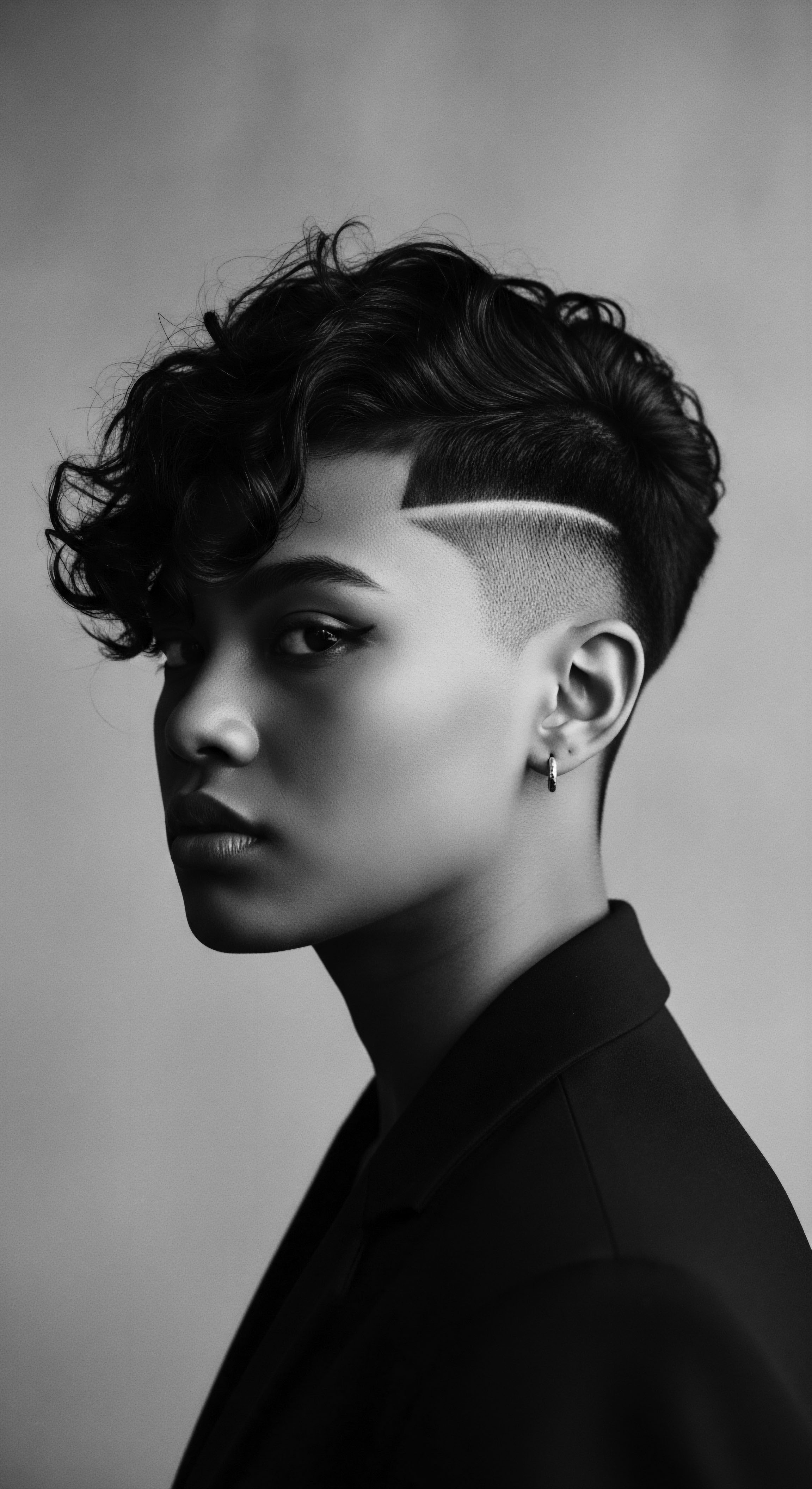
Roots
Feel the strand between your fingers. Is it tightly coiled, a spring compressed with millennia of wisdom? Perhaps it gently undulates, a soft wave carrying the echoes of ancient winds. Or does it stand proud, a robust pillar of heritage?
This intimate connection to our hair, often overlooked in its daily tending, holds a history etched not just in texture, but in the very journey of humanity. To truly grasp the richness of our textured hair heritage , we must first unearth the elemental ‘why’ behind its very existence, particularly in the sun-drenched lands near the equator. What confluence of cosmic dust, solar embrace, and ancestral adaptation sculpted these unique strands into being? It is a story told in the very helix of our being, a tale of survival, sun, and deep belonging.
The genesis of textured hair speaks of our earliest steps upon the Earth, particularly across the vast African continent, the crucible of human origin. As our ancestors migrated and thrived within these equatorial zones, the relentless solar intensity presented an undeniable force. The sun’s rays, while life-giving, carried also a potential for harm, particularly to the delicate scalp and the precious, developing brain.
Hair, in its nascent form, served as a primary shield. But the straight, fine hair common in cooler climates would have offered little defense against such a formidable, direct assault.
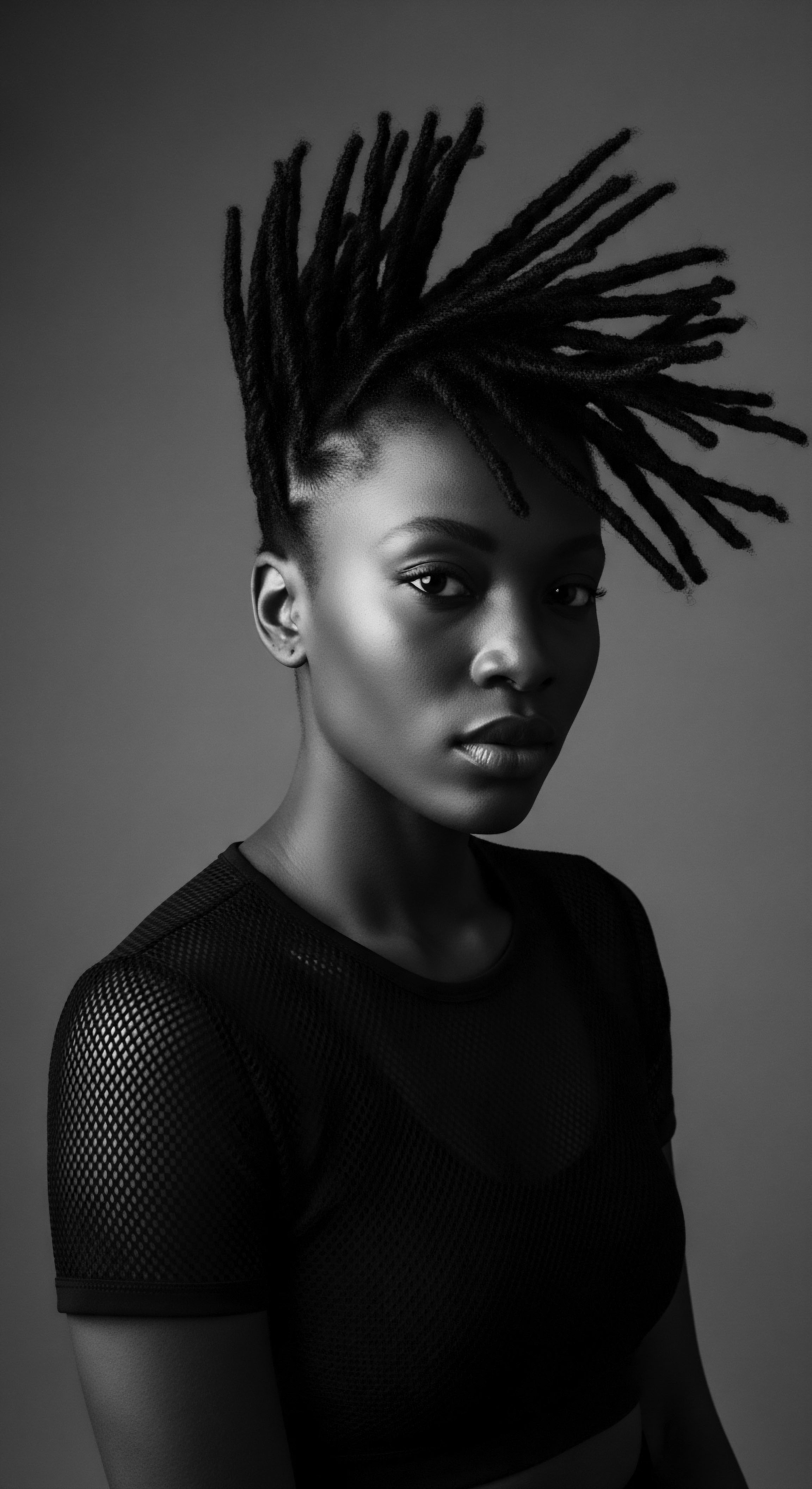
What Environmental Demands Shaped Early Hair Structures?
Consider the sun at its zenith in equatorial regions—an unyielding, direct beam. Our bodies developed several mechanisms to cope with this. Melanin in the skin offered protection against ultraviolet radiation, darkening the skin over generations. But the head, the seat of complex thought, required specialized defense.
Here, textured hair emerged as a biological marvel, a natural, highly effective parasol. Its tightly wound coils and dense packing created an insulating layer, trapping air close to the scalp. This air pocket acted as a buffer, reducing the direct transfer of heat from the sun to the scalp, thus aiding in thermal regulation. Moreover, the coiled structure meant less surface area of the scalp was exposed to direct sunlight, minimizing harmful UV penetration. This particular adaptation safeguarded the brain, a organ highly susceptible to heat stress, allowing for continued cognitive function and survival in demanding environments.
Textured hair’s coiled structure served as a biological parasol, creating an insulating air pocket that shielded the scalp from intense equatorial sun and minimized harmful UV exposure.
Beyond direct heat management, the tightly bound coils provided a distinct advantage in environments often characterized by limited water availability. Straight hair, particularly when long, can wick away moisture from the scalp and skin, leading to dehydration. The natural coiling of textured hair reduced this wicking effect, helping to retain essential moisture on the scalp.
This attribute was especially critical in arid or semi-arid equatorial landscapes where water was a precious commodity. The hair, therefore, did not solely offer thermal protection; it contributed to overall hydration preservation, a subtle yet substantial benefit for survival.

How Did Ancestral Life Ways Influence Hair Morphology?
Our forebears lived intimately with the land, their lives intertwined with the sun’s rhythm and the demands of gathering and hunting. This active, outdoor existence meant constant exposure to the elements. The hair’s structure, therefore, adapted to endure not just heat, but also physical stress. The spring-like resilience of coils makes them remarkably strong.
They can withstand tugging, braiding, and styling practices necessary for a mobile, resourceful people. This inherent strength allowed hair to be styled into protective forms that kept it out of the way during daily tasks, yet also offered additional insulation or ventilation as needed. The versatility embedded in the hair’s morphology itself speaks to the ingenuity of ancestral adaptation.
Consider the early human diet, primarily plant-based and rich in micronutrients essential for hair health. The very nourishment drawn from equatorial soils likely supported the genetic expressions leading to diverse hair patterns. While a direct causal link is complex, the interplay between nutrient availability, environmental stress, and genetic selection undoubtedly played a part in stabilizing traits such as hair density and Coil Tightness. The lineage of this hair, therefore, is not merely one of adaptation, but one of profound relationship with the land that sustained us.
The genetic markers associated with textured hair are found in populations with the deepest ancestral roots in equatorial Africa. The prevalence of certain genetic variations, particularly those linked to specific hair follicle shapes (often elliptical or flat, producing coiled strands), provides concrete evidence of this long evolutionary arc. Over millennia, individuals whose hair offered superior protection in these environments had a higher likelihood of survival and reproduction, passing on these advantageous traits. This ongoing process of natural selection solidified textured hair as a defining characteristic of communities in these regions, forever intertwining biology with ancestral legacy .
| Hair Type Trait Follicle Shape |
| Equatorial Hair Characteristics Elliptical to Flat |
| General Climate Link Allows for greater curvature of the hair strand |
| Hair Type Trait Hair Density |
| Equatorial Hair Characteristics Often Higher |
| General Climate Link Provides a denser, more insulating canopy |
| Hair Type Trait Coil Pattern |
| Equatorial Hair Characteristics Tightly Coiled to Kinky |
| General Climate Link Creates insulating air pockets, minimizes sun exposure |
| Hair Type Trait Sebum Distribution |
| Equatorial Hair Characteristics Uneven along coiled strands |
| General Climate Link Presents challenges for moisture retention in modern contexts, but historically managed by cultural practices |
| Hair Type Trait These biophysical attributes reflect a long history of adaptation to specific environmental pressures, shaping a distinctive hair heritage. |
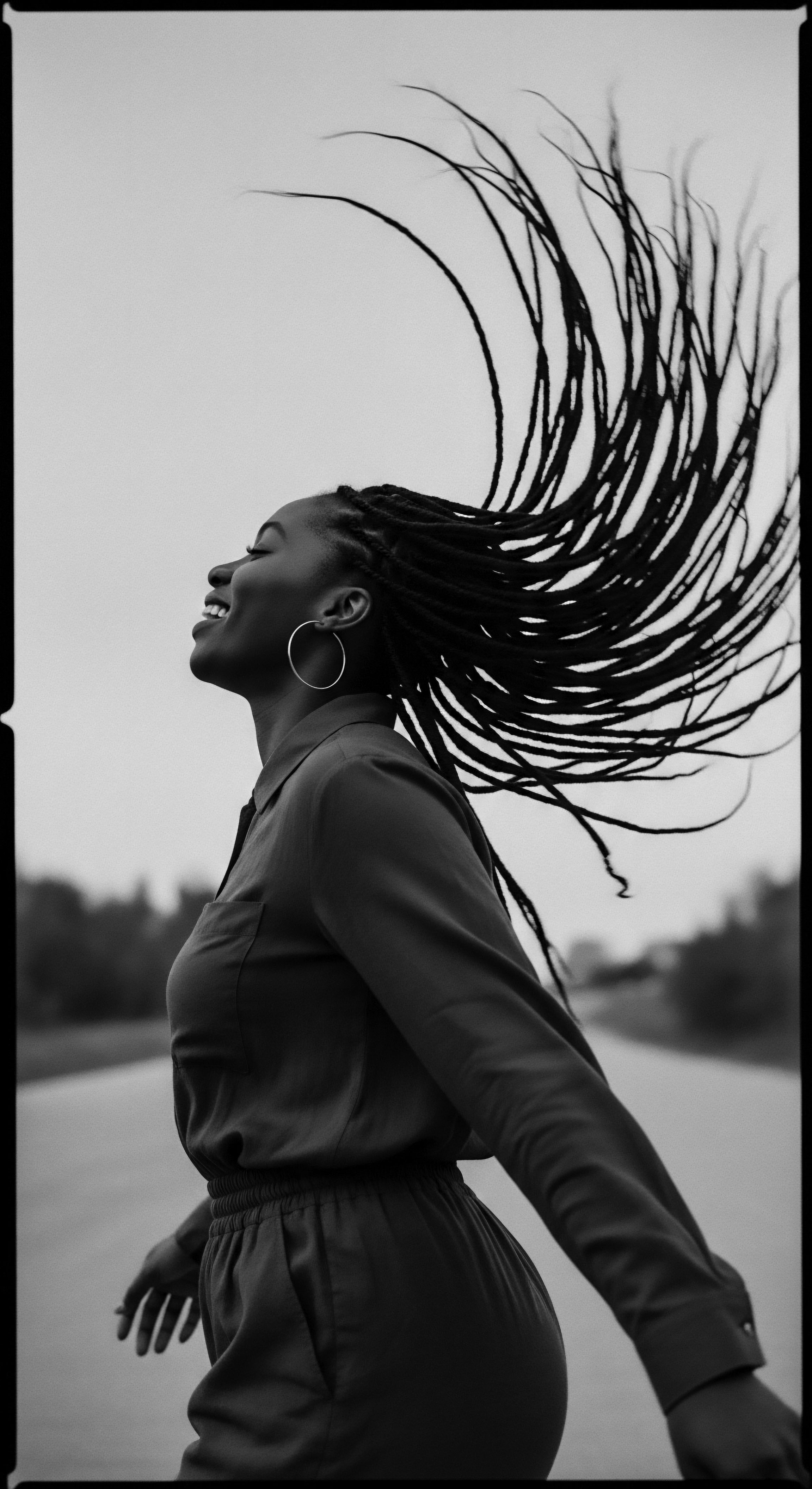
Ritual
From the very moment of its first coiling, textured hair was not just a biological shield; it was a canvas for expression, a living archive of community and custom. The ways our ancestors interacted with their hair became ritual , a tender thread weaving through daily life, social standing, and spiritual connection. The evolution of textured hair in equatorial regions extended beyond mere biology, shaping practices of adornment, protection, and collective identity that echo through generations. These traditions, born of necessity and elevated through ingenuity, became the bedrock of a profound hair heritage .
The demands of the equatorial environment, the persistent sun, and the need for protection, spawned a wealth of protective styling techniques. Braids, twists, and locs were not merely aesthetic choices; they were intelligent responses to the climate. These styles bundled the hair, further minimizing sun exposure to the scalp and reducing moisture evaporation. They shielded delicate ends from breakage caused by environmental elements and active lifestyles.
This deep historical precedent for protective styles demonstrates a practical ingenuity that became intrinsically linked with beauty and cultural meaning. For instance, the enduring practice of cornrowing, tracing its origins back thousands of years across Africa, served both as a protective measure against harsh climates and as a complex visual language (Opio, 2018). Each line, each pattern, could convey marital status, age, community allegiance, or even spiritual beliefs. These were not casual hairstyles; they were statements of being, maps of identity.

How Did Hair Care Rituals Mirror Environmental Rhythms?
The care of textured hair in ancestral communities was deeply rooted in the natural world. Ingredients drawn from the immediate environment—plant oils, butters, clays, and herbal concoctions—were used to cleanse, condition, and adorn. The practice of oiling the hair and scalp, for example, using shea butter or palm oil, was a widespread ritual. This served not only to moisturize and soften the hair, counteracting the drying effects of sun and dust, but also to facilitate the intricate braiding and twisting techniques that were central to traditional styling .
These practices were often communal, passed down from elder to youth, turning hair care into a shared experience, a lesson in generational wisdom and familial connection. It became a time for storytelling, for transmitting history, for reinforcing social bonds.
Ancestral hair care, using natural ingredients and communal practices, turned daily routines into rituals of connection, skill transfer, and historical preservation.
The tools themselves tell a story. Early combs, carved from wood or bone, were designed to navigate the unique structure of textured hair , detangling without excessive stress. Adornments—cowrie shells, beads, precious metals, and natural fibers—were woven directly into hair, signifying status, achievement, or rites of passage.
These additions were not simply decorative; they were extensions of identity, imbued with meaning and symbolism passed down through oral traditions. The very act of adorning hair became a celebration of life, a testament to resilience, and a connection to ancestral pathways .

What Role Did Hair Play In Communal Identity And Ceremony?
In many equatorial African societies, hair carried immense spiritual and social weight. It was seen as the closest point to the divine, the conduit through which blessings and wisdom flowed. Hair was believed to house a person’s spirit, and its careful tending was a form of reverence for oneself and one’s lineage. Certain hairstyles were reserved for specific ceremonies—births, coming-of-age rites, marriages, or funerals—each style carrying a specific message or prayer.
This profound connection to hair as a marker of identity and spiritual significance extended beyond individual adornment. In some West African communities, for instance, the complexity of a hairstyle could denote one’s social standing or even one’s role within a given ceremony. The hair of elders, often loc’d or intricately braided over decades, was particularly revered, seen as a physical manifestation of accumulated wisdom and experience. This practice of hair as a living record, a testament to time and ancestral memory , truly sets textured hair heritage apart.
- Shea Butter ❉ Extracted from the nuts of the shea tree, a staple in many West African cultures for moisturizing hair and skin, often used in ritualistic preparations.
- Palm Oil ❉ A traditional oil across diverse African communities, valued for its conditioning and protective qualities for hair.
- Karkade (Hibiscus) ❉ Used in parts of North and East Africa for its cleansing and strengthening properties, often steeped into hair rinses.
- Black Soap ❉ A traditional cleanser from West Africa, derived from plantain skins and other natural ingredients, providing a gentle wash.
The rhythms of care, the communal gatherings for styling sessions, and the stories shared during these moments, all contributed to a living library of textured hair heritage . This was practical science, yes, but it was also poetry in motion, a testament to the enduring human need for connection, meaning, and beauty, all woven into the fabric of daily life under the equatorial sun.

Relay
The echoes of ancestral wisdom, once whispered from elder to child during communal styling sessions, now resonate across continents, relayed through generations, adaptations, and reclamations. The journey of textured hair heritage from equatorial cradle to the modern world is a testament to its enduring power, its capacity for resilience, and its profound role in shaping identity. Understanding ‘why’ textured hair evolved informs not only our scientific comprehension but also our ongoing cultural conversation about beauty, belonging, and the future. This historical perspective grounds contemporary care practices, providing a deep connection to lineage and a profound sense of self.

How Did Ancestral Understanding Of Hair Inform Later Care?
While modern science offers granular insights into hair biology, many contemporary textured hair care practices find their roots in ancestral wisdom . The ancient understanding that textured hair thrives on moisture and gentle handling is now validated by scientific studies on its unique cuticle structure and natural propensity for dryness. For instance, the practice of pre-shampoo oil treatments, a modern staple for many, mirrors the traditional oiling rituals that prepared hair for cleansing while maintaining its softness.
Similarly, the emphasis on protective styles in contemporary hair care, such as braids, twists, and extensions, directly descends from the adaptive strategies developed by our forebears to shield hair from environmental damage. These are not merely trends; they are continuous expressions of a timeless understanding of what this hair truly needs to flourish.
The deliberate choice of natural ingredients, so central to ancestral hair care , also sees a powerful relay into present-day products. Many formulations for textured hair now proudly feature shea butter, coconut oil, and aloe vera, components used for centuries across Africa and its diaspora. This re-centering of traditional botanicals is a direct acknowledgment of their efficacy, a bridge across time that links modern wellness to ancient healing. The connection is not superficial; it signifies a deeper respect for the knowledge preserved and passed down through oral histories and lived practices.
Modern hair care for textured hair often mirrors ancestral practices, confirming the timeless wisdom embedded in traditional approaches to moisture and protection.
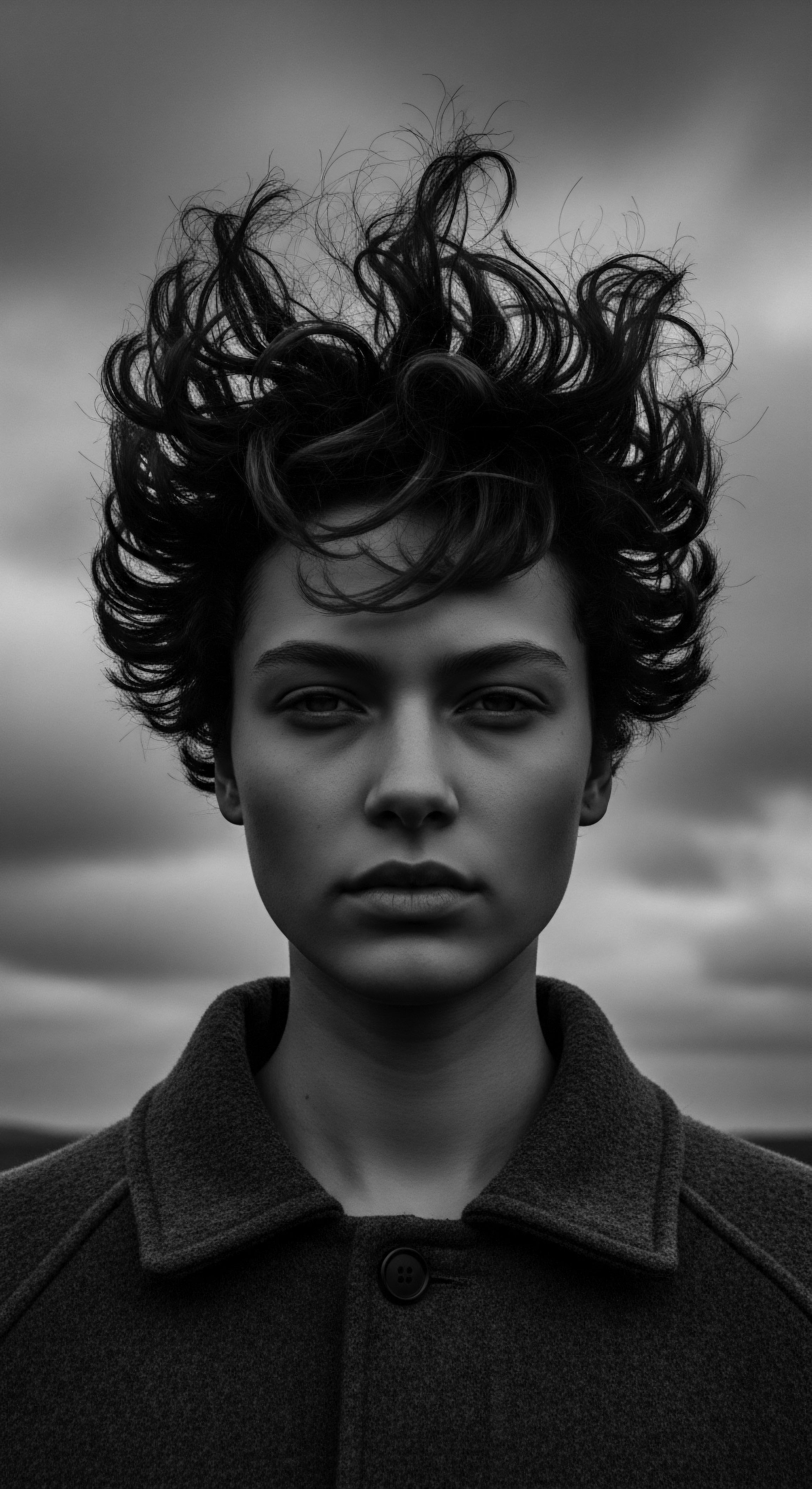
What Are The Inherited Challenges And Triumphs Of Textured Hair In The Present?
The historical journey of textured hair is not without its complexities, particularly through the lens of displacement and the transatlantic slave trade. Stripped of ancestral lands and communal hair care rituals, many individuals were forced to adapt their practices under duress, sometimes resorting to harsh chemicals or styles that caused damage. The legacy of this period manifests in continued challenges, including the prevalence of cultural biases against textured hair and the sometimes-painful pursuit of conformity to Eurocentric beauty standards. Yet, even in the face of these pressures, the spirit of textured hair heritage persisted.
Enslaved people and their descendants often maintained intricate braiding traditions in secret, sometimes weaving maps to freedom into their styles, or using them to store seeds. This resilience, this steadfast preservation of cultural markers through hair, speaks to the profound tenacity of the human spirit.
Today, a powerful movement of textured hair affirmation is sweeping across the globe. This represents a conscious relay of ancestral pride, a reclaiming of natural beauty, and a celebration of diversity. Individuals are choosing to wear their hair in its natural, coil-defined state, challenging prevailing norms and asserting their identity. This choice is often an act of profound self-acceptance, a conscious reconnection to a rich and sometimes suppressed heritage .
It reflects a growing understanding that hair is not merely aesthetic; it is a declaration, a link to lineage, a site of personal and collective liberation. This movement has catalyzed significant innovation in hair care, leading to products specifically formulated for the unique needs of textured hair , often drawing inspiration from traditional methods .
Dr. Bertolami and colleagues (2018) highlighted in their research on hair shaft morphology that the unique elliptical cross-section of highly coiled hair, while offering superior thermal insulation, also presents specific challenges related to moisture distribution along the strand and susceptibility to mechanical damage if not properly cared for. Their work, focusing on biophysical attributes, underscores the scientific basis for the traditional emphasis on moisture retention and gentle handling in textured hair care .
This scientific validation reinforces that ancestral practices were not accidental, but rather highly effective adaptations to the hair’s intrinsic characteristics and environmental factors. It provides a contemporary ‘why’ to the ‘how’ of centuries-old care.
- Afro-Puffs ❉ A simple, yet powerful, natural style that allows coils to spring freely, a direct statement of natural hair pride.
- Finger Coils ❉ A modern technique for defining natural curl patterns, echoing the hand-crafted precision of traditional hair artistry.
- Twist-Outs and Braid-Outs ❉ Contemporary methods that use a traditional protective style to create a temporary, stretched coil pattern, combining protection with aesthetic versatility.
The ongoing relay of textured hair heritage is dynamic. It encompasses scientific inquiry, cultural reclamation, and personal journeys of self-discovery. It is a dialogue between past and present, a continuous unfolding of understanding how biology, environment, and the human spirit intertwined to shape not just a hair type, but a legacy of profound meaning and beauty that continues to evolve and inspire.
| Aspect of Care Moisture Retention |
| Ancestral Practice (Heritage Link) Regular application of plant-based oils and butters (e.g. shea, palm). |
| Contemporary Application (Relay & Evolution) Use of deep conditioners, leave-ins, and moisturizers with natural oils and humectants, often inspired by traditional ingredients. |
| Aspect of Care Scalp Care |
| Ancestral Practice (Heritage Link) Herbal rinses, clay treatments, communal massaging during styling. |
| Contemporary Application (Relay & Evolution) Specialized scalp treatments, stimulating oils, gentle cleansing shampoos, and regular detangling. |
| Aspect of Care Protection from Elements |
| Ancestral Practice (Heritage Link) Intricate braiding, wrapping hair in fabrics, specific cultural head coverings. |
| Contemporary Application (Relay & Evolution) Protective styles (braids, twists, locs), silk/satin bonnets, scarves, and pillowcases for sleep. |
| Aspect of Care Hair Adornment & Identity |
| Ancestral Practice (Heritage Link) Weaving in cowrie shells, beads, feathers, signifying status, rites, beliefs. |
| Contemporary Application (Relay & Evolution) Hair jewelry, wraps, and accessories used for personal expression, cultural pride, and aesthetic enhancement. |
| Aspect of Care The enduring wisdom of ancestral practices continues to inform and shape modern textured hair care, demonstrating a continuous, living heritage. |
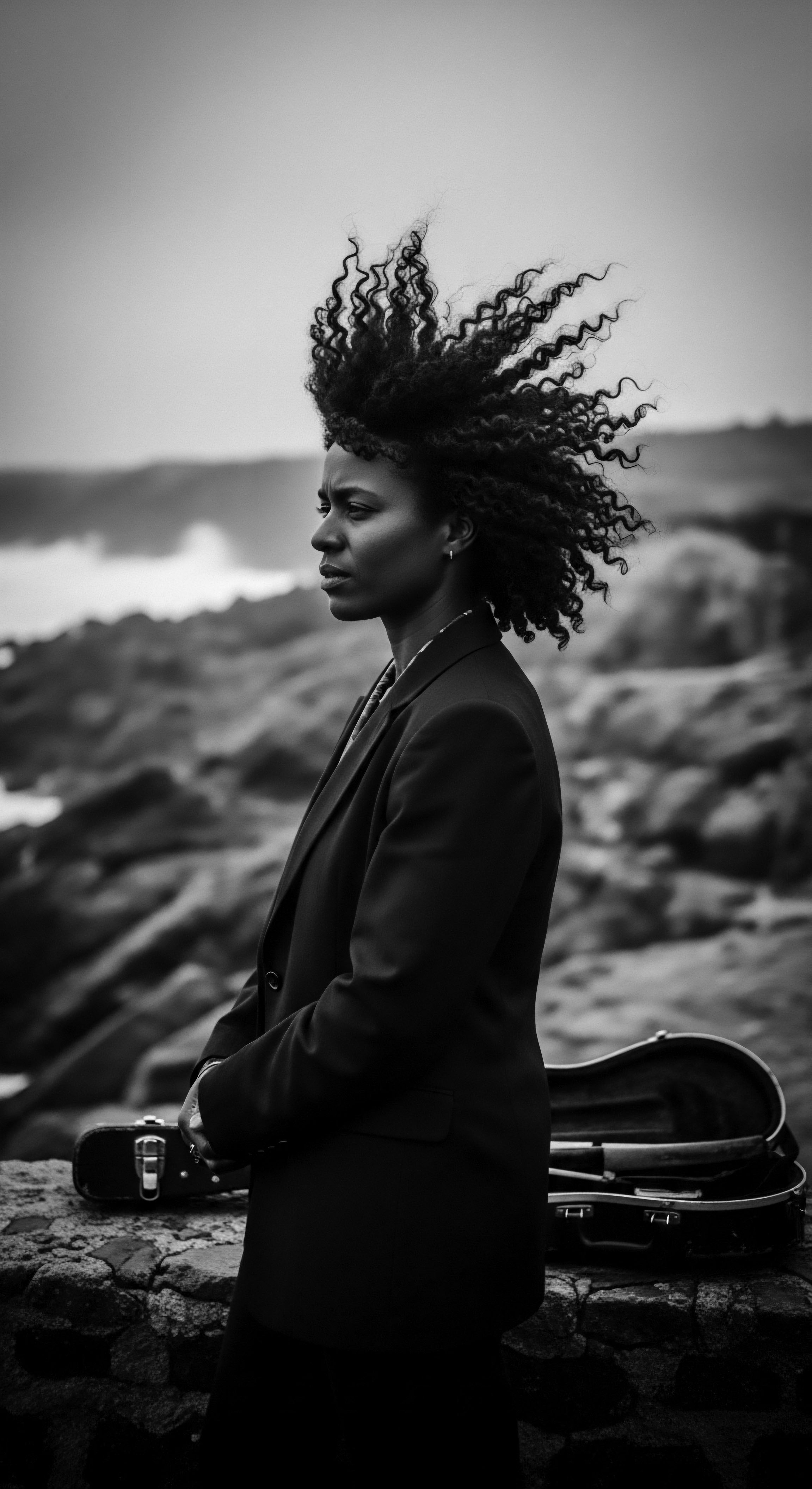
Reflection
To contemplate the evolution of textured hair in equatorial regions is to gaze into a profound mirror, reflecting not just biology, but the very soul of human adaptation and enduring spirit. Each coil, each curve, carries the whisper of sun-drenched plains, the resilience of ancestral ingenuity, and the quiet strength of those who first walked this Earth. The ‘why’ behind its specific formation is woven into the larger tapestry of our human story, a narrative of harmonious existence with environment, of clever responses to nature’s demands, and of beauty born from necessity.
This exploration into textured hair heritage moves beyond simple scientific fact; it invites a spiritual connection to a lineage that has survived, adapted, and thrived against formidable odds. It recognizes that our hair is more than keratin; it is a living archive, holding memories of communal care, sacred rituals, and unspoken tales of perseverance. As we understand its origins, we are reminded of the deep roots that bind us to our past, allowing us to stand taller, more authentically, in the present. The ‘Soul of a Strand’ whispers that this hair, in its myriad forms, is a gift, a continuous source of identity, strength, and boundless beauty for all who share its rich and winding lineage.
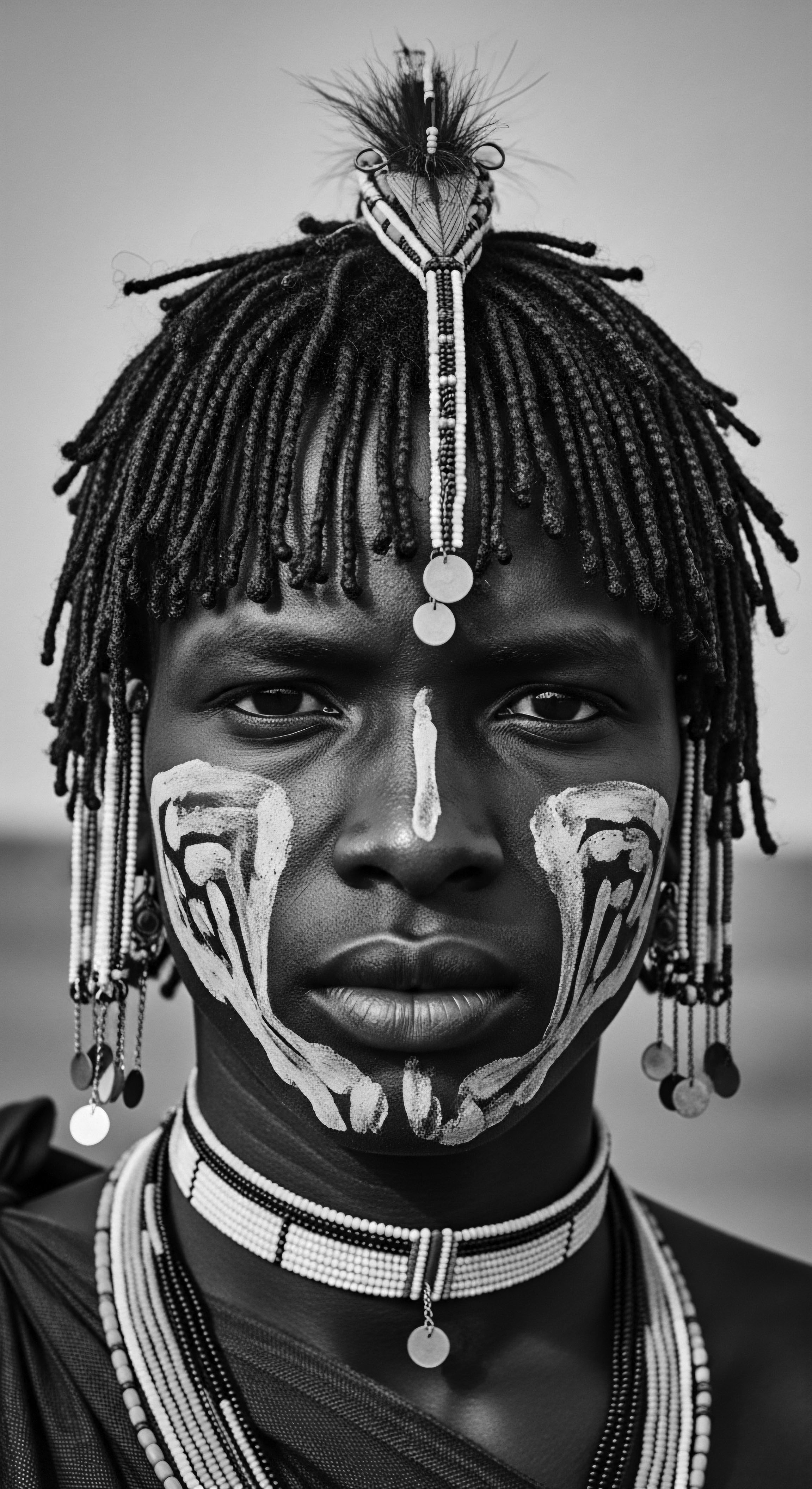
References
- Opio, J. (2018). African Hairstyles ❉ Styles of Yesterday and Today. Fountain Publishers.
- Bertolami, C. N. & Bertolami, C. B. (2018). Hair and Hair Diseases. Springer.
- Robbins, C. R. (2012). Chemical and Physical Behavior of Human Hair. Springer.
- Dawber, R. P. R. & Van Neste, D. J. (2009). Hair & Scalp Disorders ❉ Common Problems and Their Management. Blackwell Publishing.
- Molefe, C. (2016). The Natural Hair Handbook ❉ A Guide for Afro-textured Hair. African Perspectives.
- Byrd, A. D. & Tharps, L. L. (2002). Hair Story ❉ Untangling the Roots of Black Hair in America. St. Martin’s Press.
- Harris, M. T. (2012). The Nappy Roots ❉ A Social History of Black Hair. University of California Press.
- Banks, I. (2000). Hair Matters ❉ Beauty, Power, and the Politics of Hair in African American Culture. New York University Press.
- Weitz, R. (2004). Rapunzel’s Daughters ❉ What Women’s Hair Tells Us About Women’s Lives. Farrar, Straus and Giroux.
